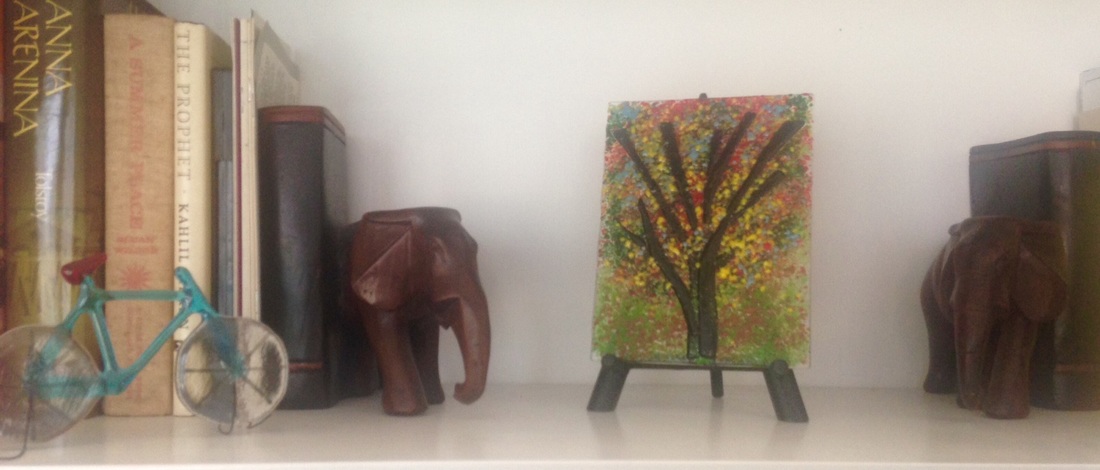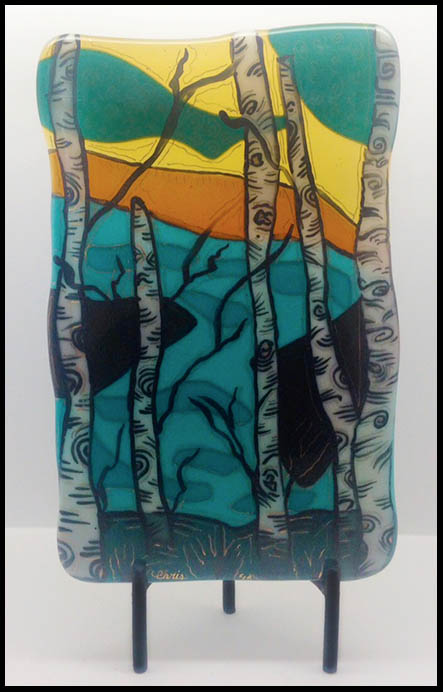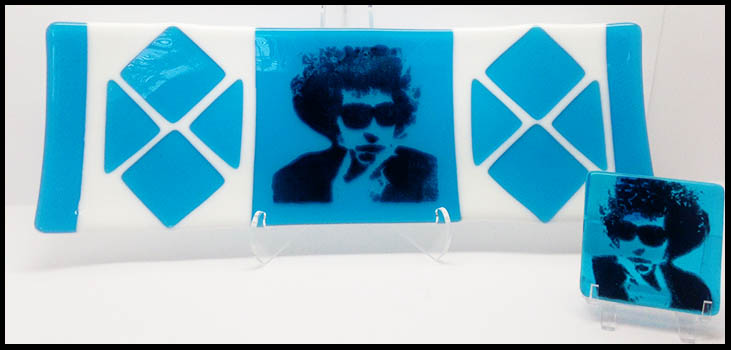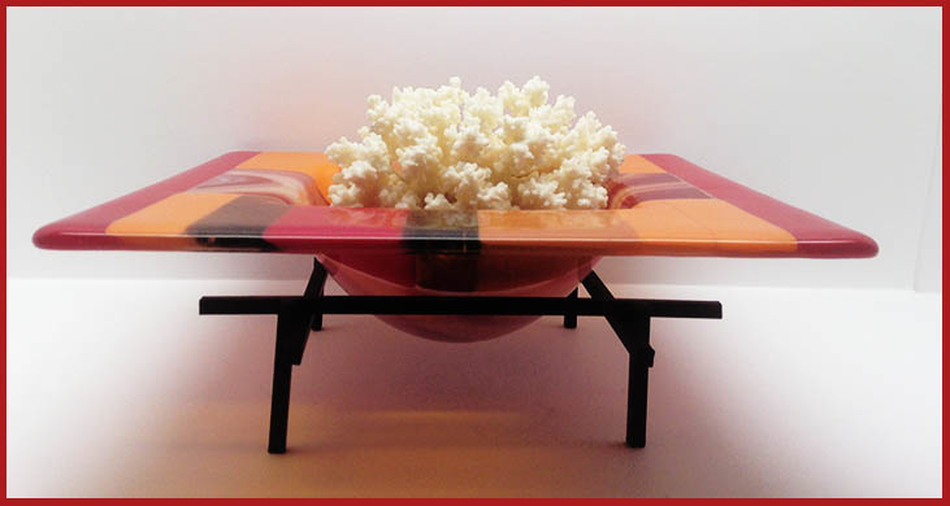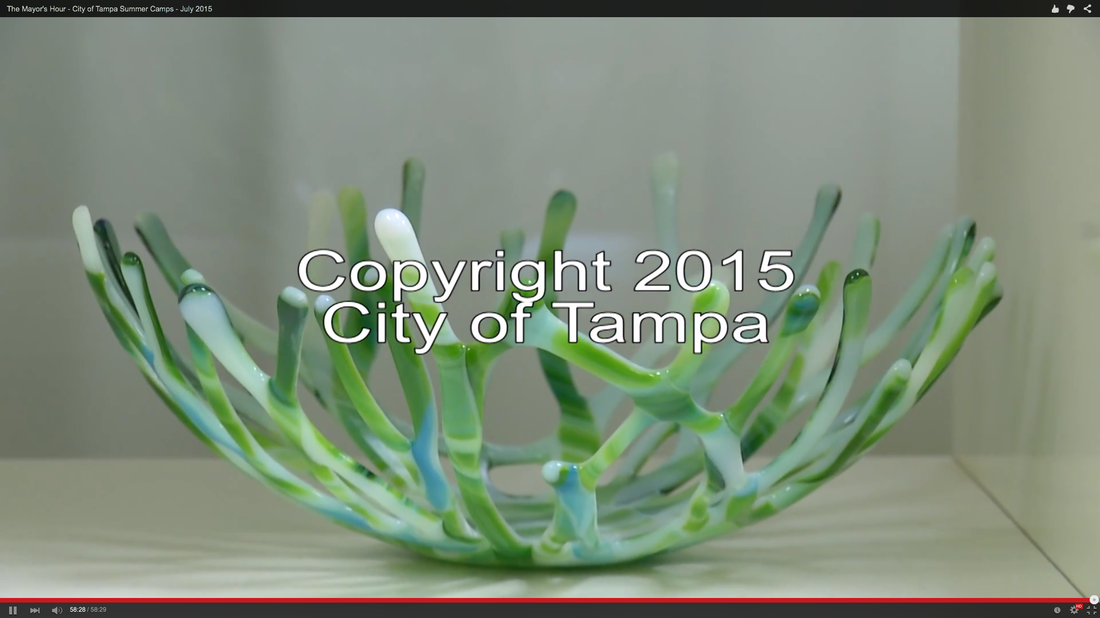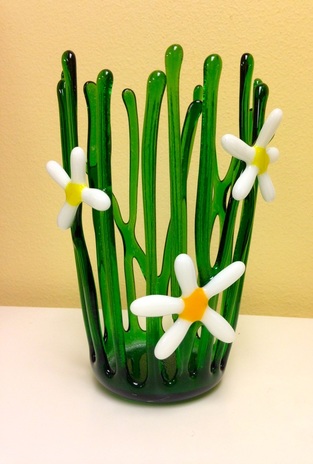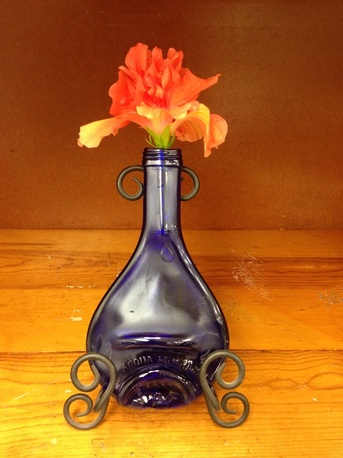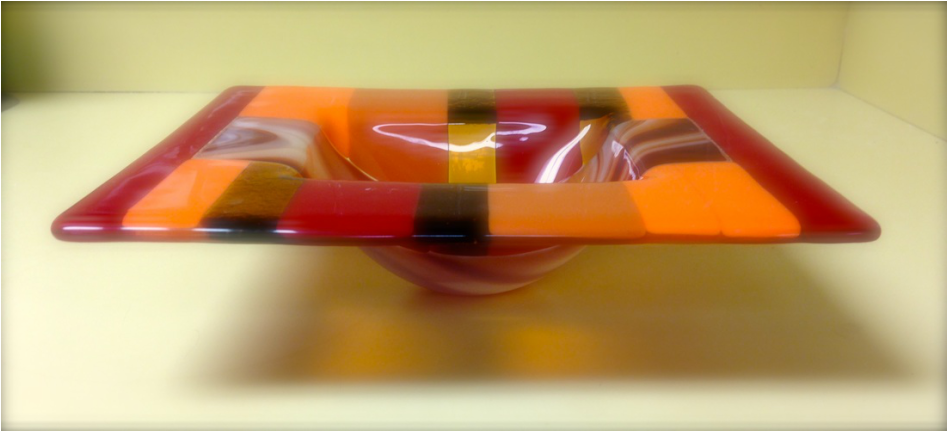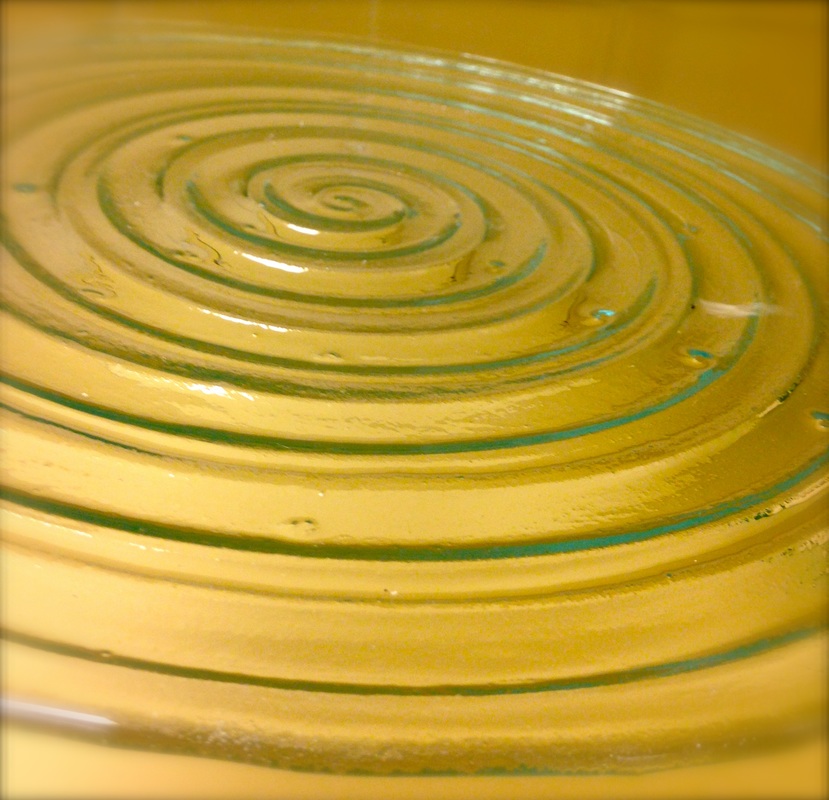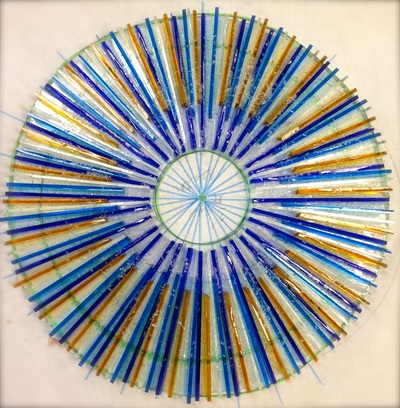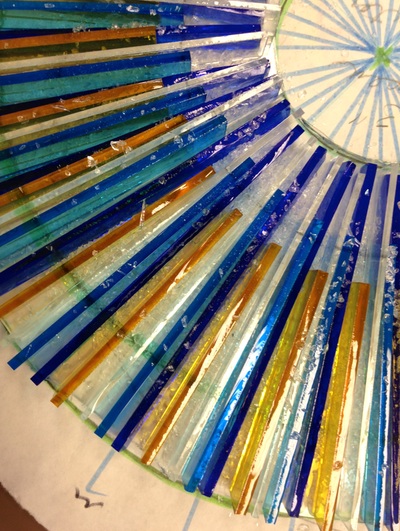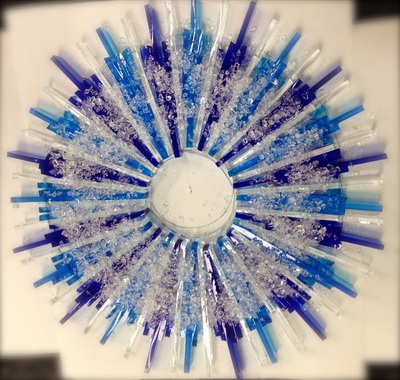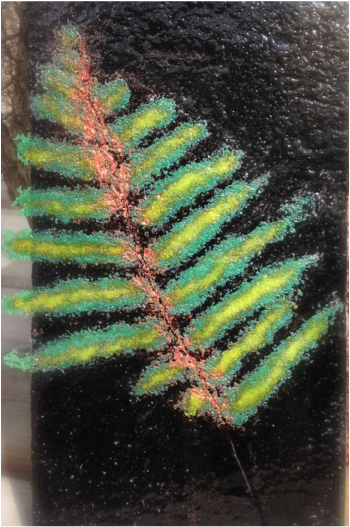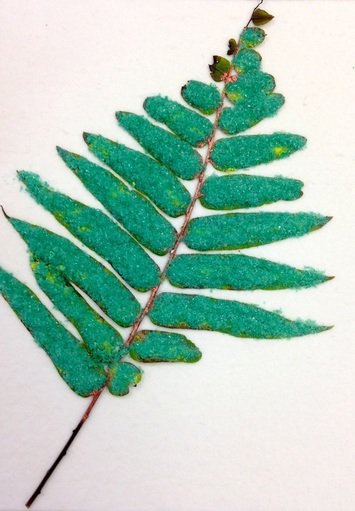Fusing glass is a technique that dates back to the Roman empire, although the Greeks and Egyptians also lay claim to the art form. Regardless of its origin, fusing gained popularity in the United States in the mid 1960s. Transparent glass holds that wonderful aspect of allowing light to radiate its beauty to new heights. As opposed to the precise nature of stained glass which is exacting and perfect, fusing allows the artist to incorporate movement and "happy accidents" into the piece. Glass that is to be fused does not always have to be cut with extreme accuracy and precision; the pieces will flow into each other if allowed to fire hot enough. An artist can incorporate movement by controlling the depth of a piece through multiple firings.
Inspired by an artist Larry Pile of Texas, I decided to take "laying glass on it's side edge" to a new level. The three-dimensional body cast on the left was my first attempt at slumping stripped glass.
Fall Foliage in Tampa is pretty nonexistent. Every year I celebrate the end of summer's heat by making a fall foliage piece. One year it was a quilt; another year pottery with fallen leaves. This year I made a fused glass tree resplendent with colorful falling leaves.
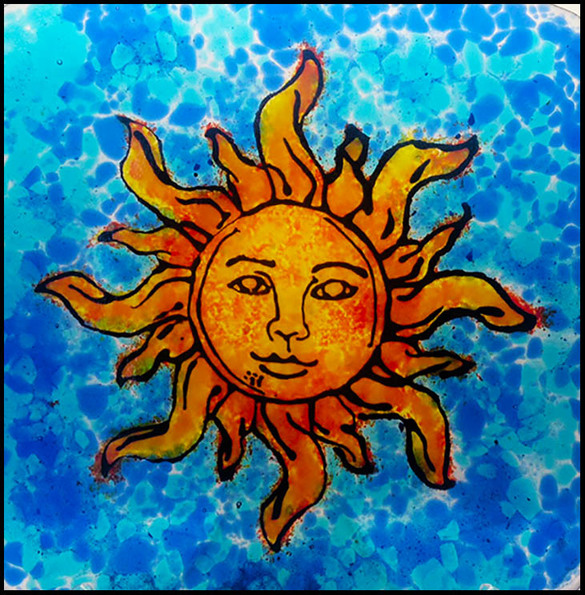
This fused plate was a combination of high-fired enamels enhanced with different grades of frit to add color, movement and dimension.
Frit is glass ground to consistencies as fine as powder (for sifting) or as chunky as small pebbles (for precise placement).
The difficulty with this piece is I cannot decide which side I prefer, the front or the back which is displayed here.
Frit is glass ground to consistencies as fine as powder (for sifting) or as chunky as small pebbles (for precise placement).
The difficulty with this piece is I cannot decide which side I prefer, the front or the back which is displayed here.
Being an avid SCUBA diver, my husband has a love for coral and keeps popping chunks inside my glass or pottery pieces. I have to say, this looks pretty darn cool inside my drop-out bowl.
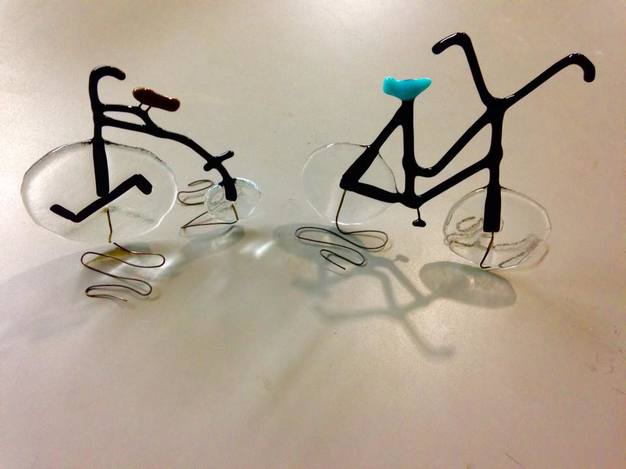
After mastering the 10-speed, I have advanced to the Boneshaker and the monkey handlebars. Rather than using a band saw to cut curves, I fired up the torch to manipulate bends in thin strips of glass.
By laminating wire into the wheels, the bike is self-supported eliminating the need for a stand.
I was very honored to have Mayor Bob Buckhorn film his monthly television broadcast, "The Mayor's Hour", at Taylor Art Studio in June. The mayor and I worked side-by-side scoring and breaking glass curves. Mayor Buckhorn did a great job creating the beautiful coral bowl above which he proudly displays in his office downtown.
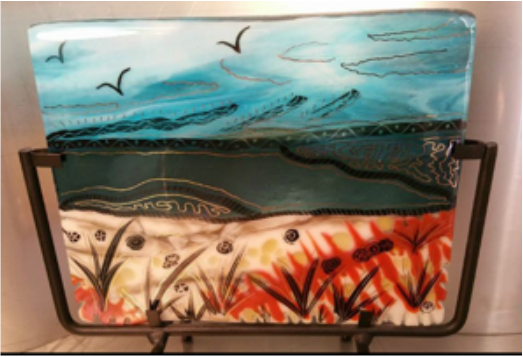
My latest passion in glass fusion is layering landscapes using methods learned in a class taught by artist Alice Benvie-Gebhart. Where I have several wafers and landscapes in progress, the one featured here is my first completed piece. I proudly have it displayed in my home accented with back-lighting.
Drop bowl with cold worked base for easy displaying.
This piece was fun. I threw a spiral plate on the wheel then slumped glass
on it. I will be teaching teenagers this technique over the summer
in an attempt to create some new fusion enthusiasts.
Inspired by Texas artist Larry Pile, I've been experimenting with laying
thin strips of glass on their sides and fusing. I love this process and
need to post some of the "after" shots.
The wreath (pictured left) was a fun project I did with a group of twenty-one t(w)eens in an attempt to recycle used Pelligrino bottles. We put the cleaned bottles in wrapped canvas and smashed the bag against the side of a cement post. After drawing a circle onto kiln paper, we glued the glass shards in three overlapping layers. We full fused by pushing the kiln temperature an extra 30 degrees to accommodate for the bottle glass (which needs a little more heat to fire evenly). Finished wreaths were wire wrapped and adorned with flat backed Swarovski crystals. Happy Holidays! |

